What's new in the wheeled car market
In the design of the RG41, special emphasis is placed on survivability, mobility, compatibility with combat modules, as well as on the needs of the soldier and the unit
The newest wheeled vehicles currently being developed represent a vivid illustration of the trend towards affordability, protection, combat stability and modularity. Let's see what is offered on the market.
The limited role of the wheeled armored vehicle has been transformed, from a reconnaissance or support facility it has evolved mainly into a direct combat use system. This evolution, in particular, reflects the progress in the technology of suspension and power unit; This is especially true for improved suspension systems that now allow off-road coverage. However, there is also a clear understanding of the inherent advantages that wheeled platforms can provide.
Only twenty years ago, tracked platforms dominated, but at the present time wheeled combat vehicles can be seen in almost every modern army in the world, they could be the preferred option for developing advanced combat systems.
Four, six and eight
The wheel configuration 4x4, even having a high performance suspension, is limited in its off-road maneuverability and payload, which is necessary for a true combat vehicle. A short wheelbase and only two bridges means that it cannot overcome many obstacles, in particular ditches, moats and ledges.
Machines with three and four axes do not have such restrictions and are capable of carrying large masses without adversely affecting the total specific pressure; this also results in increased maneuverability on soft soils. As a result, machines of such configurations have become, by and large, the preferred solution for wheeled combat vehicles.
Some of the most famous developments of wheeled armored vehicles originate in Europe. Acquired by General Dynamics European Land Systems in 2004, the Mowag family of machines, for example, is widely represented in the fleets of many armies. Currently, over 8000 machines are in operation around the world, and production lines in North America continue to operate at full capacity. A new version of the Piranha V was presented at the Eurosatory 2010; variants III and IV have undergone significant modernization. These include the American Army Stryker, the Canadian LAV III (based on the IIIH 8x8) and the US Marine Corps LAV.
Improvements include increased power and payload, modular ballistic protection, better survivability and mine protection and, in spite of the large overall mass, increased maneuverability.
A look at the industry
The modernization program that General Dynamics Land Systems (GDLS) has planned for the American Stryker fleet allows us to get an idea of the types of upgrades that are likely to be carried out on all wheeled vehicles.
Tim Reese, business development manager at GDLS, said that starting with 2017, there will be several upgrades to the Stryker machine. Their goal is to restore performance, increase system survivability, as well as compatibility with new digital technologies.
The protection of the double V-shaped hull against mines and improvised explosive devices (IEDs) has already been implemented and tested in Afghanistan and will be implemented in another 900 machines. The suspension will also be upgraded to work with 27 tons, hp 350 engine. and the alternators on the 570 amps will be replaced with the 450 hp Caterpillar C9 engine and the generator with the 900 amps, which is very important to meet the growing needs of onboard and external electronics.
In addition, the integration of digital systems will allow not only seamless data and video sharing between crew members using common displays (provided by Kongsberg Integrated Tactical Systems), but also networked with other machines.
These upgrades are also needed for a potential increase in Stryker firepower. At one of the demonstration samples, the Kongsberg Protech remote-controlled combat module with a medium-caliber 30 mm gun was installed and, although it certainly offers more fire power than the current 12,7-mm machine gun, the disadvantage is that it reduces the number of portable infantrymen from 9 to 5 or 4 people - a common dilemma arising from the installation of more powerful weapons.
Survival Systems
Similar LAV fleet modernization programs are conducted by the Canadian Army and the US Marine Corps.
LAV Survivability II is equipped with self-sealing fuel tanks, energy-absorbing crew seats and lightweight bottom protection. As part of the LAV Survivability III retrofit program, a modern suspension system, a centralized wheel inflation system, an anti-lock braking system, a vehicle level control and leveling system, a new electrical system (semiconductor), a new turret support ring and digital controls with common crew displays are installed; , power unit is being upgraded. These elements will extend the life of the LAV to 2035 year.
Piranha V is considered the fifth generation system. The mass of the machine does not exceed 30 tons (load capacity 13 tons), but it can be increased to 33 tons. It has an advanced semi-active hydropneumatic suspension, a more powerful 430 kW motor MTU 6V199, a protection level corresponding to STANAG 4, it is possible to install combat modules of a larger caliber on it.
The length was increased to 8 meters in order to obtain a larger internal volume, since the width of armored vehicles is mainly limited by road and railway regulations; now in the car can accommodate in addition to the three crew members eight paratroopers. The increase in internal volume will simplify the task of installing various equipment, as well as the installation of additional weapons, sensors and other equipment necessary for the separation of infantry. Large internal volume also contributes to the increase in the duration of independent operations, which are especially important when conducting expeditionary maneuvering combat.
Interestingly, the car is offered with optional amphibious capabilities and, apparently, is a candidate from GDLS for the Marine Corps program for the Amphibious Combat Vehicle (ACV) floating combat vehicle. The machine is equipped with an engine cooling system with outboard water, louvered grilles for the engine, a water deflector, propellers and steering wheels.
First deployment
Iveco’s Freccia and Centauro vehicles form almost the first family of wheeled combat vehicles. It includes an artillery mount with a large caliber gun (originally 105 mm tank NATO standard cannon, and currently 120 mm cannon) and BMP.
These machines fall into the category of machines weighing about 30 tons; They are equipped with OTO Melara towers: one with the 105 / 120-mm cannon and the other with the 25-mm combat module.
However, SuperAV is mainly developed with the company's funds and can be considered as the next generation car. The project manager at Iveco, Nazario Bianchini, said that “from the very outset, the project focused on the survivability of the soldier. The crew and assault forces are housed in an armored capsule, actually in the inner "hull" with a modified V-shaped bottom. "
Suspension and drive wheels taken from Centauro, but, for the most part, placed externally. This, in combination with the possibility of installing additional modular armor, allows the crew to increase the level of protection while maintaining a mass of about 26 tons.
This is especially important since protection in accordance with the NATO standard 4 and 5 level according to the NATO standard STANAG 4569 will become the norm for promising combat vehicles. SuperAV from the very beginning was created as a floating machine, in addition, empty niches between the armored capsule and the outer hull also increase the buoyancy.
Two coaxial propellers of opposite rotation provide the machine with the speed of the 5,4 floating node, while the overall length of the 7,93 meter allows to increase the internal volume and increase stability with a strong breaking wave. The amphibious characteristics of the vehicle made it a candidate for the Marine Personnel Carrier design of the Marine Corps, which is currently being restarted and received the designation Amphibious Combat Vehicle (ACV). In this project, Iveco has joined forces with BAE Systems. Also on the Italian car SuperAV is based the VBTP-MR Guarani 6x6 BTR, the production of which for the Brazilian army is conducted by Iveco Latin America.
Order book
The Finnish company Patria with its armored modular machine Armored Modular Vehicle (AMV) has achieved significant success. Orders were received from Croatia, Finland, Poland (KTO Rosomak), South Africa (named Badger in accordance with the cooperation agreement with Denel), Slovenia (Svarun), Sweden and the United Arab Emirates. She is also one of the contenders in the ACV Marine Corps Program; there, together with Lockheed Martin, the machine is presented under the designation Havoc.
The AMV uses a modular concept: various towers, weapon systems, sensors, functional kits and communication systems are installed on a common base chassis. Here again, the defense is highlighted, ballistic protection against 30-mm armor-piercing shells is provided along the frontal arc, and mine protection can withstand an 10 kg of TNT explosion (the South African version will have better protection). Its hydraulic suspension is adjustable for each wheel, and driving performance reportedly amazes users so far.
Patria's next model - AMV XP (XP - Extra Payload, Extra Performance and Extra Protection - super load carrying capacity, over-performance, over-protection) - was presented at the DSEi 2013 exhibition in London. It has a modernized power drive with an 603 horsepower engine, which is connected to what the company calls integrated terrain control system. The power steering is available on two axles with optional rear axle controls. All-wheel drive cars and fully independent suspension with double wishbones with hydro-pneumatic shock absorbers on each wheel provide a smooth ride even when driving on rough terrain at high speed. The power supply parameters are increased to 530 amperes in order to meet the energy needs of the future soldier and multifunctional information and control systems. An onboard monitoring and diagnostic system and a digital backbone network are also installed.
The XP version has an 8,4 meter length, which makes this machine one of the longest combat vehicles, but Patria believes that it is necessary to get more internal space for the landing and its equipment, and the increased roof area will allow large weapon systems to be installed without penetrating aft compartment. AMV XP can take a variety of weapons; the machine was already shown with a Nemo 120-mm mortar.
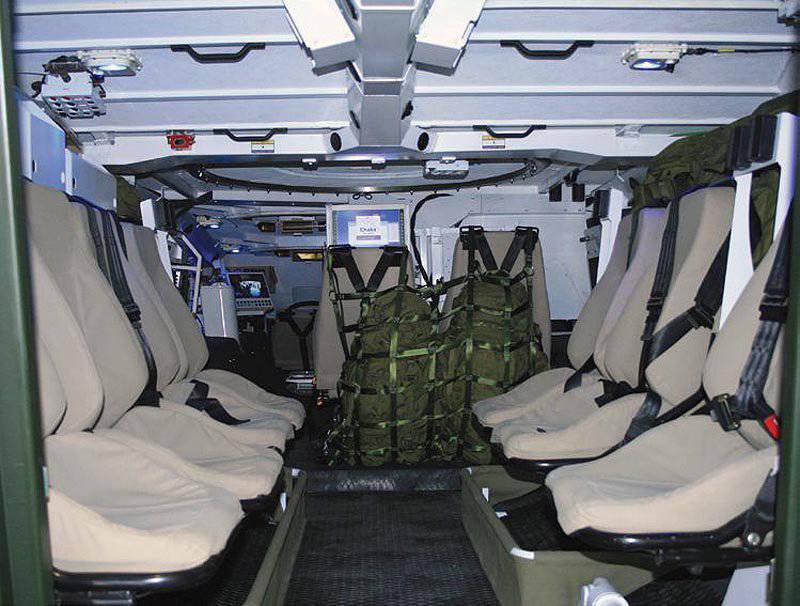
RG35 is a versatile vehicle that can offer the crew good protection.
Next generation
VBCI (Vеhicule Blindе de Combat d'Infanterie - combat armored infantry vehicle) from the company Nexter - this is a BMP of the French army of a new generation, which replaces the tracked AMX10. The original versions had a combat mass of 28 tons, but at Eurosatory 2014, a modified version was shown with a maximum gross weight of 32 tons. The machine currently has all four axles steering and a mechanical / pneumatic suspension combination.
VBCI upgrades are already underway, including the installation of various weapon systems (the 30-mm OWS combat module from OTO Melara was also shown), a more powerful power unit and improvements in survivability, including lattice screens and enhanced mine protection.
The British army rented VBCI cars for the purpose of conducting evaluation tests and, apparently, the improvements made were quite satisfactory to the British, who had previously expressed their claims on certain issues.
In other countries, China, Japan, Singapore, South Korea, Taiwan and Turkey, have begun development and deployment programs for locally-made wheeled vehicles.
For example, work on the machine Terrex 8x8 began in a commercial project between the Singapore company ST Kinetics and the Irish Timoney Technology. Mr. Sun, vice president of a wheeled vehicle development project at a Singaporean company, said that the first task was to get a machine with “exceptional” mobility.
The car has a patented front suspension with twin wishbones, MacPherson rear suspension with hydraulic shock absorbers and large 295 / 85 R20 wheels with a centralized tire inflation system. The machine has a specific pressure on the ground of all 361 kPa even under full load, which allows it to maintain permeability on soft soils.
The total mass is 24 tons, the total payload 9,5 tons. The Terrex BMP floats and can develop a 5,4 node speed on the water with the help of two propellers in protective covers. By agreement with Leidos, the machine is also a candidate for the ACV 1.1 Marine Corps Program, where it has already demonstrated its capabilities on the water and its ability to pass through the surf.
The platform has a digital architecture so that new technologies can be integrated, such as a navigation system, a battle management system, and power management. Terrex BMP modular, can be configured for various tasks and is able to accept weapons systems up to 30 caliber mm. Anti-mine protection provides double V-shaped body.
Two cars for the Korean army
Meanwhile, in November 2012, the company Hyundai Rotem received a contract from the South Korean army to develop 6x6 and 8x8 vehicles with good maneuverability with an eye on the initial deployment in the troops in 2016.
The KW1 version of the Scorpion 6x6 has an armored personnel carrier configuration that can perform various support tasks, while the KW2 8x8 Jupiter version is equipped with an 120-mm tank gun. The new machine is able to accept various weapons systems, and current levels of protection provide protection against small arms. weapons and artillery shell fragments. KW machines in both configurations will replace tracked vehicles in the internal security forces and rapid deployment forces.
Turkey is currently confidently occupying a niche in the wheeled vehicle market, its companies FNSS and Otokar produce wheeled armored vehicles in no way inferior to machines produced by reputable companies that have proven themselves in the field of BBM.
BMP Pars is available in 6x6 and 8x8 variants. It can perform a variety of tasks, including a fire support vehicle with an 120-mm cannon.
The PNS (Leopard) machine from FNSS was developed to meet the requirements of the Turkish army in a special tactical wheeled vehicle. However, the program was stopped and, as a result, FNSS sent all efforts to export its vehicles.
Pars is offered in the configuration 6x6 (total weight of 25 tons), afloat the machine is driven by two water cannons. Also, the machine is offered in configuration 8x8 (30 tons), both with double wishbones, independent hydropneumatic suspension and ground clearance adjustment. All Pars bridge cars are driven, which allows you to get a turning radius of less than 7 meters.
One of the features of the layout is to place the driver in front, the commander is sitting behind him, which provides a better view. The power unit is located behind the commander, between the first and second bridges, and the passage on the starboard side allows you to get into the aft troop compartment.
The company FNSS recently entered into an agreement with the Malaysian Deftech development and production 257 armored wheeled vehicles AV8 (8x8) on the basis of the Turkish Pars 8x8 in 12 options, including the option of BMP with 30-mm gun and self-propelled artillery with guns 90 caliber, 105 or 120 mm .
The wheeled combat vehicle AMV XP next generation from the company Patria
All in anticipation ... New version of the AMV XP of the famous armored fighting vehicle manufactured by the Finnish company Patria
Simplified support
The two ARMA 6x6 and 8x8 machines created by Otokar have a good level of component unification, which allows reducing the logistic load and at the same time optimizing the configuration for various tasks.
Both cars have a modular design, carrying a V-shaped body of armored steel has a low silhouette and a large internal volume. The 6x6 variant has a total mass of 18,5 tons, it contains the driver commander and eight paratroopers.
The machine can also switch to 6x4 or 6x6 modes depending on the terrain, while the 8x8 version can be equipped with various weapons ranging from 7,62-mm machine guns to 105-mm guns, as well as caliber mortars to 120 mm.
As part of the South African project Hoefyster, the Ratel machine is being replaced by the new Badger AMV from the Finnish company Patria. Denel is upgrading Badger to increase ballistic and anti-mine protection. The machine will be deployed in 4 variants, including a turret with an 30-mm cannon. It is planned that the first vehicles will begin to arrive in the troops in 2015 year, with the current need for 238 BMP.
Buying BAE Land Systems South Africa OMC by Denel will provide two new projects in its portfolio, RG41 8x8 and RG35 6x6. The first model was created as a combat wheeled vehicle with South African requirements for protection and survivability, which were put forward as basic requirements. They stipulate high levels of ballistic protection and survivability in explosions on mines and IEDs.
The lower part of the body consists of five modular units, connected together and bolted to the upper structure. This not only increases the anti-explosion protection, but also allows you to quickly repair combat damage and quickly put the car back into service. Power drives are closed with a modular anti-mine kit. Armor can be replaced in the field, with the maximum level of protection corresponding to the level of 5 STANAG does not impair driving performance.
The driver’s seat is maximally advanced in order to increase visibility. When remotely controlled combat modules were installed (the 12,7 mm, 25 mm and 30 mm caliber weapons were installed), the vehicle accommodates a 10 man plus driver or an 9 with a manned turret (driver, commander, gunner plus seven paratroopers).
The platform has a load capacity of 11 tons, useful internal volume 14,9 м3. Mobility is improved by two controlled bridges with hydraulic booster, double wishbones, hydropneumatic struts and hydraulic shock absorbers, a centralized tire inflation system and 16.00R20 Michelin XZL wheels with aluminum rims 10.00R20.
Low profile
The RG35 6х6 variant differs significantly from the RG41 8x8, it is described as a multi-tasking / versatile platform with high traffic that can be used for tasks ranging from peacekeeping operations, local response operations (including catastrophes) to the present fight.
It was clear that for the military, who want to perform simple tasks, but to remain effective in battle, the options 4x4 and 6x6 and possibly 8x8 are needed. The driver and the commander sit in front next to each other, a good overview is provided by a large armored windshield.
Behind the left is installed the power unit, and in the stern there is a spacious separation of the landing. For the 6x6 configuration, the net volume is 17 м3, and the net payload capacity of 14,8 is tons.
Protection of the RG35 vehicle may be equal to the protection of the BMP variant, although typical basic protection levels correspond to STANAG 2 or 3 with the possibility of installing additional armor, which increases the level of protection to 4. Protection against mines and IEDs is also provided, although this option has a shallow V-shaped body.
Armored capsule
The crew and assault detachment is a carrier armored capsule, isolated from the fuel and suspension power unit. The newest version of the Motorized Infantry Vehicle has a medium-caliber combat module, and armored glass windows in the troop compartment to increase the level of situational awareness and orientation of dismounted soldiers.
RG35 has power density over 20 hp / t, Axletech bridges, fully independent transverse levers with hydropneumatic struts, a centralized wheel swap system and 16.00R20XZL size wheels. In addition, the ground clearance with a digital enclosure control system has four positions.
Obviously, battle wheeled vehicles were not only recognized, but became the preferred choice for the military. Prospective machines are likely to include an open digital architecture / backbone network for information transfer; high performance hydropneumatic suspension; enhanced ballistic protection and mandatory protection from mines and IEDs; a modular concept that will allow the adoption of various weapons systems and functional modules; and, finally, large-caliber and more effective guns and combat modules.
Materials used:
www.shephardmedia.com
www.baesystems.com
www.gdels.com
www.patria.fi
www.iveco.com
www.denel.co.za
www.nexter-group.fr
www.hyundai-rotem.co.kr
www.fnss.com.tr
www.otokar.com.tr
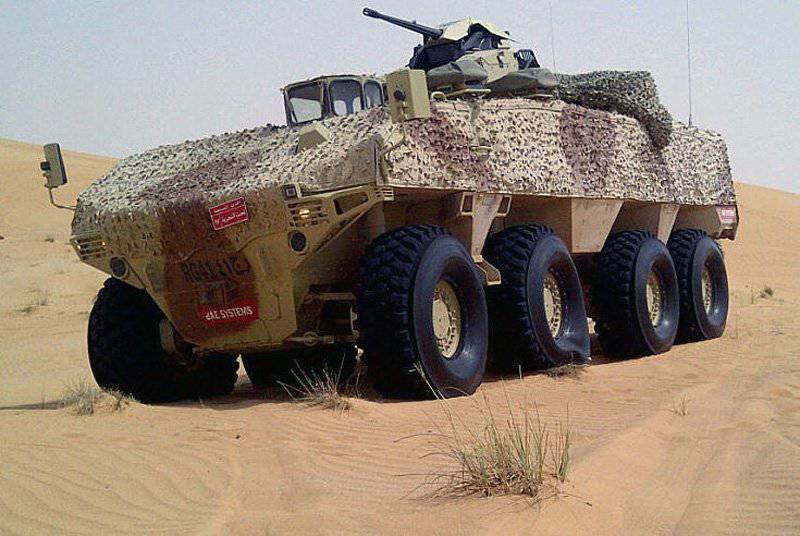
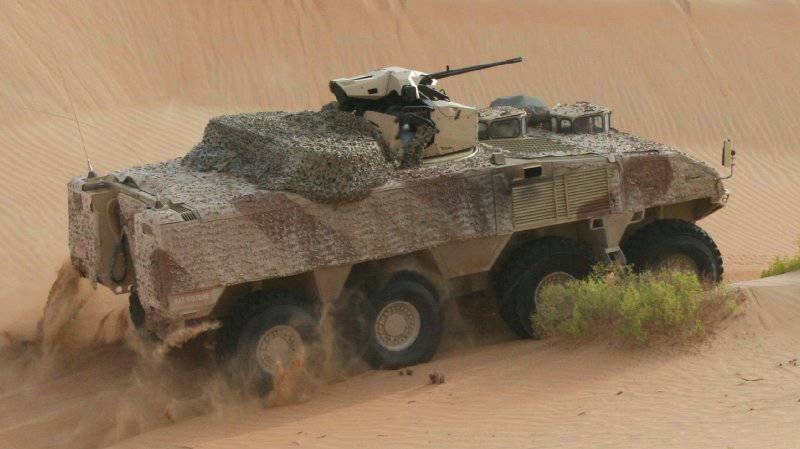
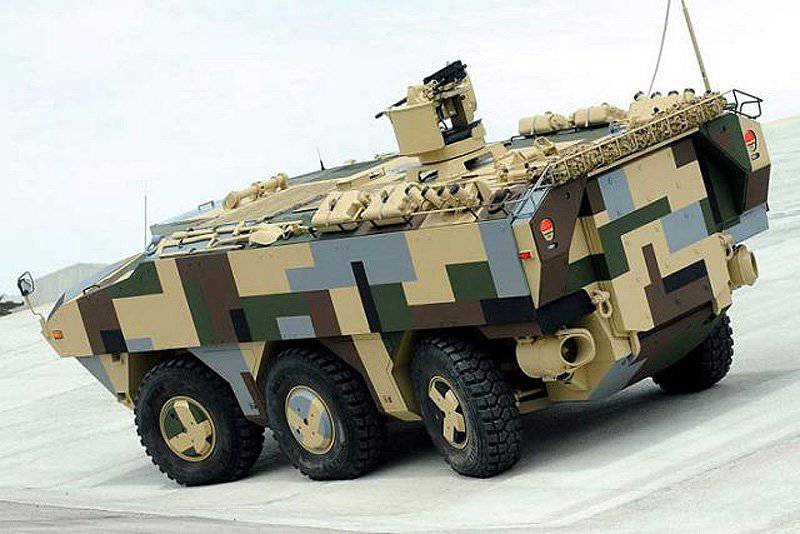
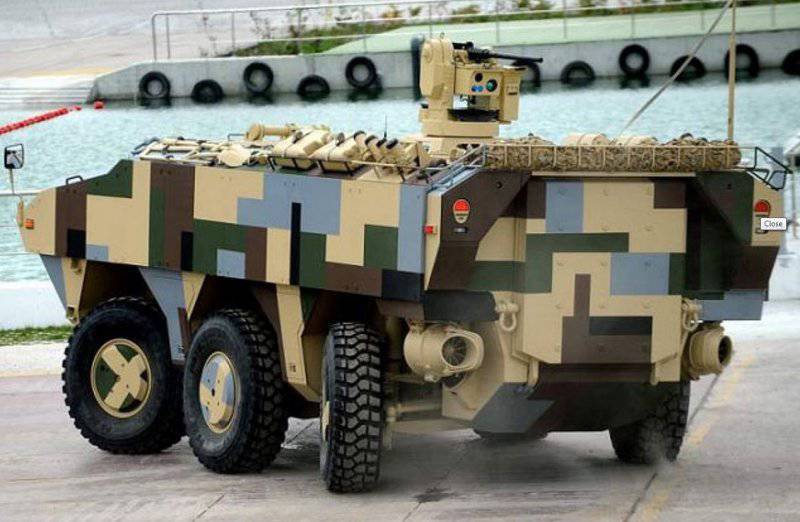
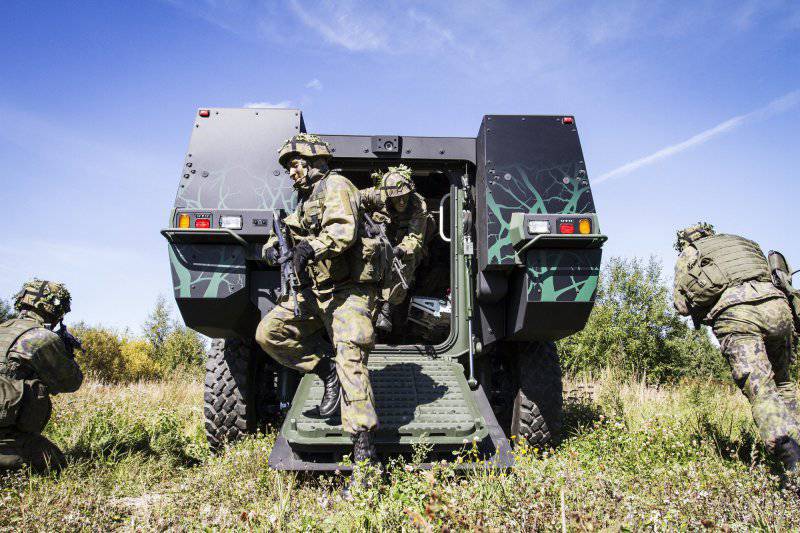
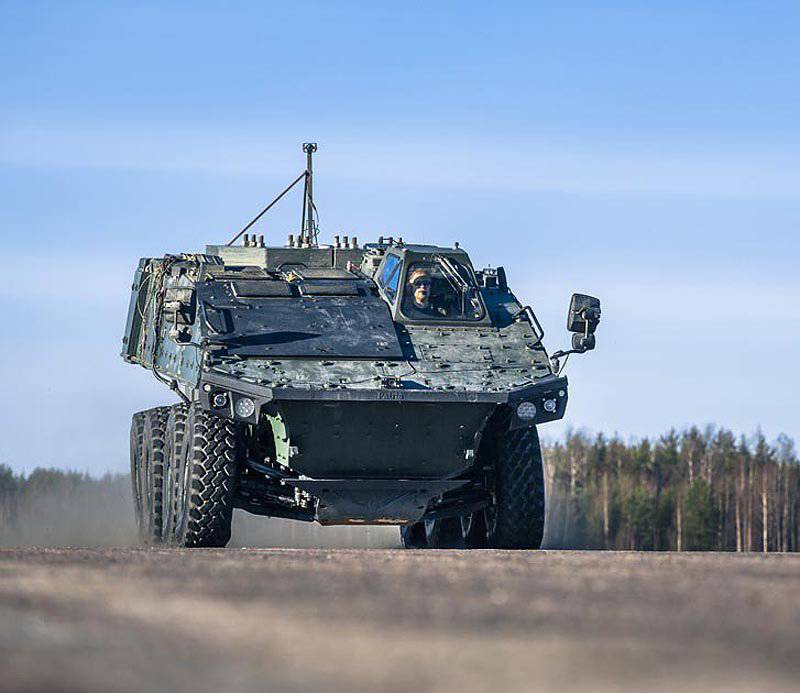
Information